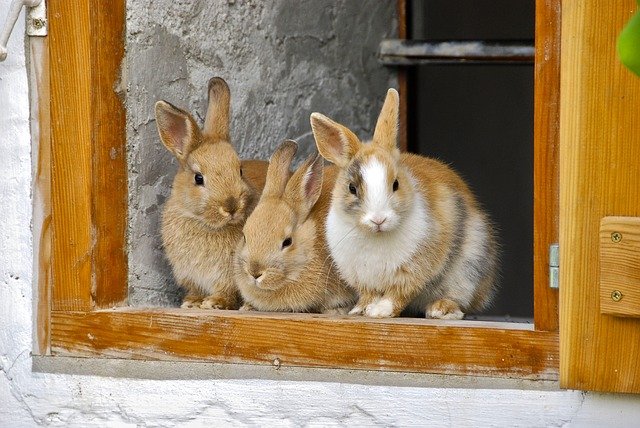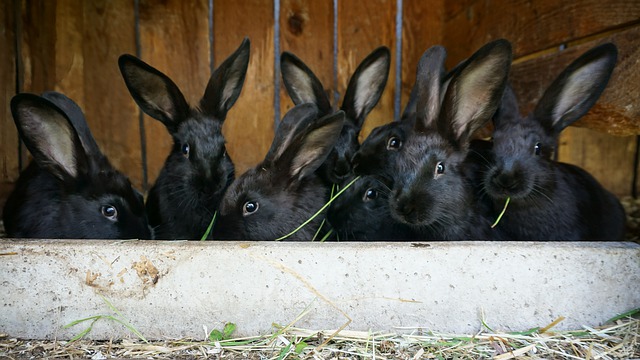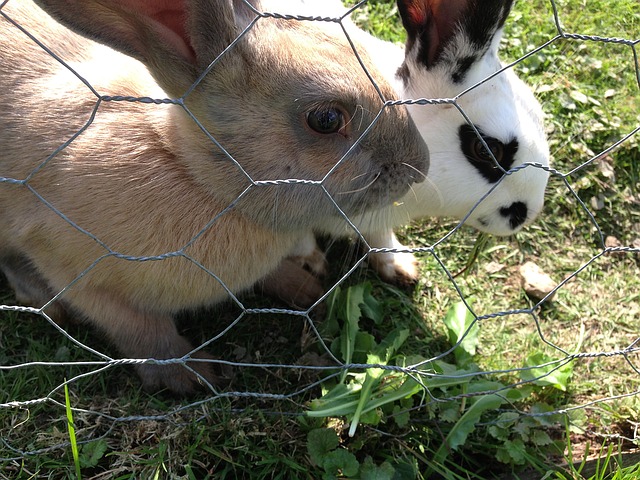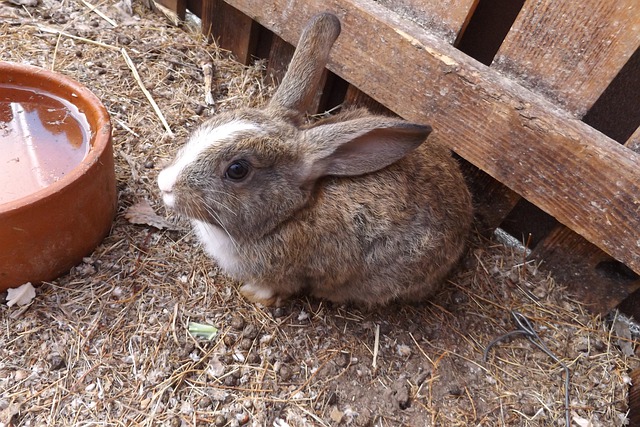Rabbit farming is one of the most profitable farming practices that farmers can enjoy doing. In India, mostly this animal is reared as a pet but in some places, people rear it for commercial purposes. This animal is being reared in India for a long time. Little rabbits are very cute, soft, and good sources of meat. In the market, there is high demand for rabbit meat but not enough supplements.
So, therefore, there will be a great future in rabbit farming in India. Also, it doesn’t need high capital investment. Just the farmers need well training and a proper rabbit farming business plan.
However, in this article, we will discuss brief details about rabbit farming, its proper strategies, and its future of it in India. So don’t skip it, it may help you for doing a new commercial farming business.
If you are found in the farming profession then our informative content will help you to grab your wide path. Gather knowledge of Goat farming, sheep farming, cow farming, cattle farming, dairy farming, fish farming, etc. And also know the tips for business strategies.
What Is Rabbit Farming?
Rabbit farming is the agricultural practice where farmers breed and raise domestic rabbits for meat and wool. Though in various places it not rearing for meat but reared as a pet. Rabbits are very soft and cute animals. Having high demand on the market the young Indian can make a strategy to rear rabbits.
Young farmers in India can get international financial help from this farming. Rabbit-rearing tradition isn’t new in this country, if we examine various studies then will know unknown information.
Rabbit rearing has been practiced over the world since the 5th century. Though at that time farmers prefer to mixed farming like they rear animals in one place. Various bunny breeds are available in the market, from where the buyers can buy their favorite ones.
Most farmers prefer to do poultry farming instead of rabbit rearing, but do you know rabbit farming doesn’t need much investment?

Popular Breeds Of Rabbits:
In various places, different types of breeds are available around the world. Among them, some are very productive. Depending on India’s weather some breeds are suitable for raising here. Below are the most productive and suitable breeds you may buy:
- Grey Giant
- Flemish Giant
- Californian
- White Giant
- Dutch
- New Zealand White
- Soviet Chinchilla.
- New Zealand Red
Advantage Of Rabbit Farming:
- Rabbits are first-growing animals, so if you go for this business strategy then don’t be delayed.
- A mother rabbit can give birth to 2- 8 kits at a time, which is amazing.
- Having high fertility the mother bunny gives birth every month.
- Food habit is good.
- In meat, production rabbits stand second after poultry.
- Another advantage is it can be kept in less space with less food. For providing food and space you don’t need to spend money.
- At a lower cost, more production is possible.
- Rabbit meat has high protein and nutrients, so there is a huge demand on the market.
- Any family member can take care of rabbits because it isn’t so hard task. No tough labor is needed for the farming of rabbits.
- Rabbit meat is highly demanded in restaurants and hotels, so there are possibilities for a profitable business in this farming field.
- Farmers also get a profit from selling rabbit kits and wool.
Method:
There are two methods of raising rabbits:
1. Litter Method:
The latter method is suitable for keeping a small number of rabbits. The floor should be made of concrete for keeping rabbits as they dig holes in the ground and make holes, which is very annoying.
In the litter method, chaff, wood chips, or paddy straw should be spread 4-5 inches thick on the floor. If you want to raise rabbits in this way, it is not right to raise more than 30 rabbits at a time.
Male rabbits should be kept in separate rooms as handling them is very difficult. Male rabbits are left with female rabbits for 10-15 minutes only for breeding.
2. Cage Method:
The cage system is especially popular for commercial rabbit rearing. For rabbit farming, cage design is very important. In that case, a cage with 3-4 shelves made of iron sheets is more suitable for the cage. Each of them has to make a nest, leaving the necessary space for the rabbit.

Rabbit Farming Business Plan:
We know that for any business or farming business, you need proper strategies. After reading this you may now think what is the best rabbit farming business plan? How do I get success from this? Here I’m going to explain all details to you, so keep patient. From buying breeds to marketing them, in every step, you need a proper plan to get success. Below are a few steps you should follow:
1. Select Healthy Breeds:
Before starting a rabbit-rearing business you should select healthy and quality breeds. Research various studies and know what breed you should select for your business. Some breeds can give birth to more kits than others. So keep all these in mind before purchasing them.
2. Breeding:
Bunnies become perfect for breeding at the age of the 5th to 6th month. The male rabbits for breeding purposes must be one year old for getting quality young kits. For breeding, you should use healthy rabbits that will be of proper age and proper weight.
You should take good care of male rabbits which are used for breeding and also take good care of the pregnant rabbit. So if you look at healthy breeding then it will be very profitable.
3. Housing:
Rabbits should be kept in cages in a small space in the corner of the house. And also reared in a secluded, clean, and quiet environment. A few female rabbits can be kept together. However, it is not right to keep more than one adult male together because they fight. Male and female rabbits cannot be kept together after the age of three months. Rabbit cages should be made of bamboo, wood, and wire net. Below are the requirements for rabbit housing:
A. An adult male rabbit needs 4 square feet of space.
B. Adult mother rabbits need 8 square feet.
C. Baby rabbits need 1.5 square feet.
4. Feeding:
Always try to feed green grass, herbs, carrots, radishes, grains, sweet potatoes, cucumbers, straw, discarded vegetables, wheat, husk, bran, soybean, milk, bread, and lentils. Grass and vegetables should always be given in dry or shiny conditions. It is better to boil soaked wheat or gram and mix husk with it.
5. Care & Management:
Animal farming needs proper care and management for a successful business. Good caring can bring you better production. You will be happy to hear that rabbits have fewer diseases so it will be positive for you. Rabbits prefer to stay in a clean place. So its house should always be kept clean and tidy. It is possible to prevent disease by keeping the house clean and tidy at all times.
6. Marketing:
In India, marketing is a big problem for commercial rabbit farming. So here this framing does not develop. Although the government and non-government organizations trying to inspire young men for doing rabbit farming. But government schemes are unable to develop it so quickly. And still, now the problem is unsolved. Having good demand for rabbit meat but it’s unclear where the farmers marketing this.

Rabbit Farming In India:
Tough have suitable land for rearing rabbits in India, but not developed here. India has a huge demand for rabbit meat but is unable to provide a proper marketplace. According to weather the suitable breeds of rabbits that can cultivate here are New Zealand Red, White Giant, Flemish Giant, Dutch, Californian, Grey Giant, Soviet Chinchilla, etc.
Conclusion:
After all, rabbit farming or raising rabbits as domestic animals has a lot of potential for economic income. Rabbit meat can be an excellent source of such animal meat. It is used as a huge source of employment for needy women and unemployed youth.
